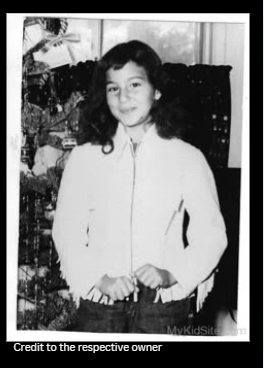She had a voice nobody wanted, a body Hollywood rejected, and learning disabilities that made school impossible—but she made one promise that changed everything.
Cher’s childhood was chaos wrapped in poverty. Different towns every few months. Different schools where she was always the new kid who couldn’t read. Eight stepfathers cycling through her life as her mother—a struggling actress named Georgia—kept marrying men hoping to find stability that never came.
They were so broke, Cher ate cereal with water because milk was a luxury. She watched her mother’s dreams crumble while trying to hold her own together.
School wasn’t just hard—it was humiliating. She had undiagnosed dyslexia and dyscalculia. Letters scrambled. Numbers made no sense. Teachers labeled her slow. Classmates mocked her openly. But here’s the paradox: while she couldn’t read a paragraph, she could hear a song once and memorize every word instantly.
Her brain worked differently. Not broken. Different.
At 16, sitting in another classroom where she felt invisible and stupid, Cher made a choice that would define her entire life: she’d rather risk everything chasing impossible dreams than play it safe being nobody.
She dropped out. Took her life savings—$11—and moved to Los Angeles. Alone. No connections. No high school diploma. No plan beyond refusing to be ordinary.
Her mother said, “Okay, honey,” in that tone that means you’ll be back.
But Cher had something nobody could teach in school: a voice that made people stop mid-conversation. Deep. Smoky. Unmistakably hers. The kind of voice that didn’t sound like any other woman in music.
In a Hollywood coffee shop in 1962, she met Sonny Bono—11 years older, already working with legendary producer Phil Spector. He heard her sing and saw opportunity. They started performing together.
Three years later, “I Got You Babe” hit #1.
Overnight, they became the face of the counterculture: long hair, bell-bottoms, young love challenging America’s establishment. They looked like the perfect partnership.
Behind the scenes, it was a cage lined with sequins.
Sonny controlled everything—the money, the contracts, the creative decisions. She discovered he’d structured their deals so she was legally his employee. She was the voice America loved, performing on the biggest stages—but earning almost nothing.
By the early 1970s, “The Sonny & Cher Comedy Hour” was one of television’s biggest shows. Designer Bob Mackie created outfits that scandalized America—bare midriffs, sheer fabrics, feathers, and sequins. When she wore a see-through beaded dress to the 1974 Met Gala, the country gasped.
“If it doesn’t fit in one picture, it’s not a Cher outfit,” Mackie said.
But her marriage was dying. In 1974, at the absolute peak of their fame, Cher filed for divorce. She walked away from Sonny, from their show, from the image that made her famous.
Hollywood whispered she was finished. She was 28. No longer half of a famous duo. A variety show star when variety shows were dying. A woman in an industry that devoured women who dared go solo.
She wasn’t finished. She was just getting started.
She pivoted to music—solo this time. Then to serious acting. In 1984, she earned an Oscar nomination for “Silkwood.” Four years later, she won Best Actress for “Moonstruck,” playing a widowed bookkeeper who falls in love unexpectedly.
At the Academy Awards, she wore another outrageous Bob Mackie creation—sheer, beaded, impossible to ignore. The fashion critics hated it.
“I’ve been criticized my whole life,” she said. “If I’d listened, I’d be nowhere.”
Then came her most audacious reinvention.
In 1998, when most artists her age were doing nostalgia tours and accepting their legacy, 52-year-old Cher released “Believe”—a dance-pop song using Auto-Tune, a vocal effect young artists were experimenting with.
Critics called it a gimmick. Radio stations said she was too old for pop radio. The music industry had written her off again.
“Believe” became a global phenomenon. It topped charts worldwide. Won a Grammy. Introduced an entire generation to Cher who’d never heard “I Got You Babe.”
She’d done the impossible: reinvented herself for the fifth time.
Today, at 78, Cher holds a record no other solo artist can claim: hit songs in six consecutive decades—the ’60s, ’70s, ’80s, ’90s, 2000s, and 2010s.
She’s won an Oscar, an Emmy, a Grammy, and three Golden Globes. She’s sold over 100 million records. She’s a fashion icon who influenced generations. An LGBTQ+ advocate. A living legend.
But here’s the truth that makes Cher’s story truly extraordinary:
She was never the best singer. Never the best actress. Never the most conventionally beautiful.
What she was—what she still is—is the most relentlessly determined.
She couldn’t read well, so she memorized everything. They told her she was too old, so she embraced sounds that scared her peers. They told her what to wear, so she wore whatever made her feel powerful. Men tried to control her, so she took control back. They dismissed her as a novelty, so she won an Oscar.
Every single time the entertainment industry wrote her obituary, she came back bigger, bolder, and more unapologetically herself.
That 16-year-old girl who left home with $11 didn’t just become famous.
She became the woman who refused to be categorized, packaged, diminished, or forgotten.
“Mom, I’m going to be the biggest star in the world,” she told Georgia before leaving for LA.
Her mother just said, “Okay, honey.”
Sixty-two years later, that promise still echoes.
Cher didn’t just survive Hollywood. She outlasted it. Out-reinvented it. Out-glittered everyone who ever doubted her.
And she did it all while wearing whatever the hell she wanted—and being exactly who she was born to be.
